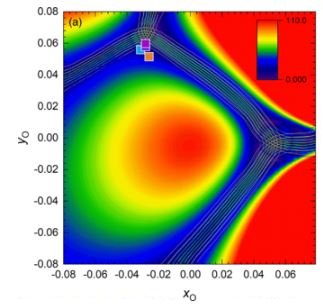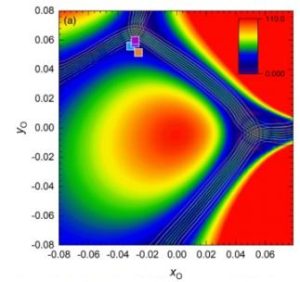Influence of Dy3+ environment on magnetic anisotropy and magnetocaloric effect in Dy3B2C3O12 (B=In, Sc, Te ; C=Ga, Al, Li) garnets
F. Damay, S. Petit, D. Sheptyakov, C. V. Colin, E. Suard, S. Rols, J. Embs, U. Stuhr, D. Bounoua, O. Demortier, and C. Decorse, Phys. Rev. B 109 (2024) 014419
In the framework of the general phase diagram published recently for a pseudospin S = 1/2 on a hyperkagome network [Kibalin et al., Phys. Rev. Res. 2, 033509 (2020)], four Dy3B2C3O12 garnets with different species on the B and C sites, namely, Dy3Sc2Al3O12 (DyScAl), Dy3Te2Li3O12 (DyTeLi), Dy3Sc2Ga3O12 (DyScGa), and Dy3In2Ga3O12 (DyInGa), have been studied by neutron powder diffraction and inelastic neutron scattering, to investigate the impact of B and C substitutions on the Dy3+ dodecahedral oxygen environment and crystal field, and thus on the Dy3+ spin magnetic anisotropy. In the four compounds, the magnetic ground state is a multiaxis antiferromagnetic order similar to that of Dy3Al5O12, characterized by an ordered moment close to the theoretical maximum, similar to 6 mu B. The gap between the ground state and the first excited crystal electric field level varies from similar to 3.2 meV (DyInGa) up to 11.2 meV (DyScAl), confirming the rather strong Ising character of the Dy3+ moment in those garnets. For a better understanding of the impact of the distortion of the oxygen environment on the Dy3+ magnetic anisotropy, point-charge calculations were then performed, mapping a magnetic anisotropy diagram versus a wide range of distortions. Results show that Ising-like behaviors mostly predominate, associated with large gx, gy, or gz Lande values, whose stable area is determined by the shape of the DyO8 cage. Magnetic entropy calculations confirm that the magnetocaloric effect increases sharply near those boundaries and validate the use of dysprosium garnets for low temperature, low magnetic field adiabatic demagnetization refrigeration cryostats.





